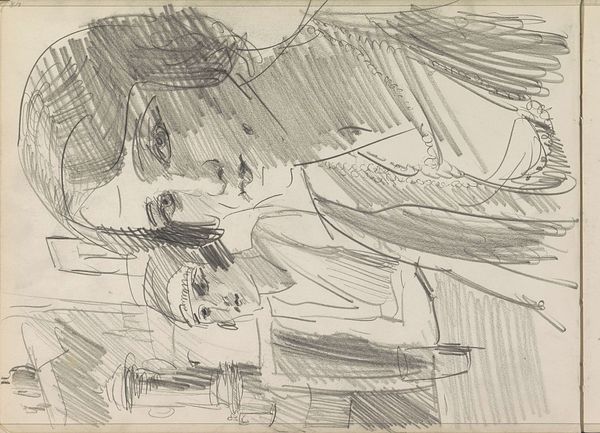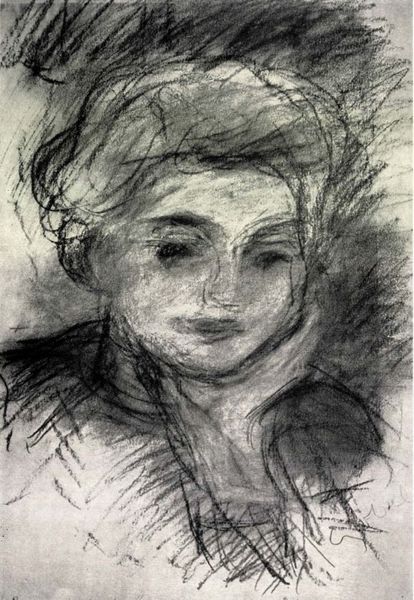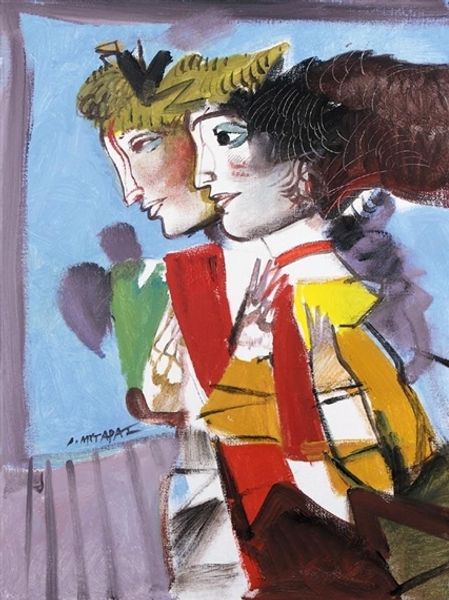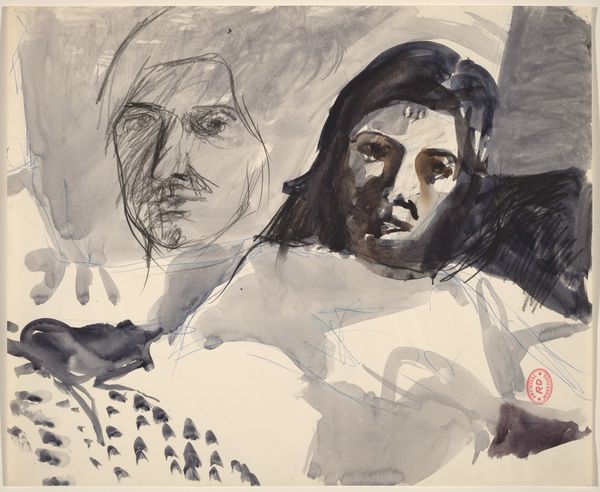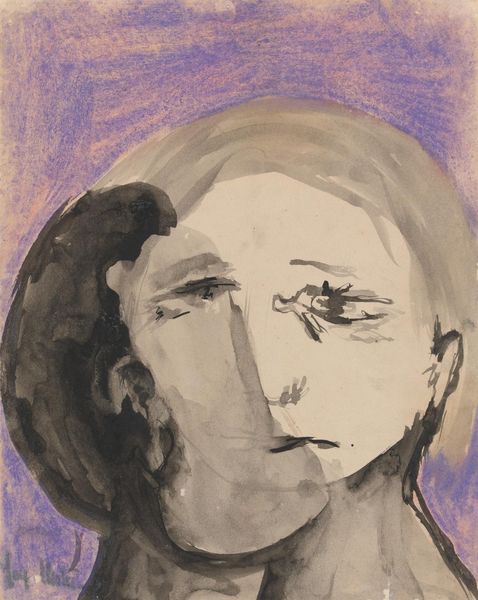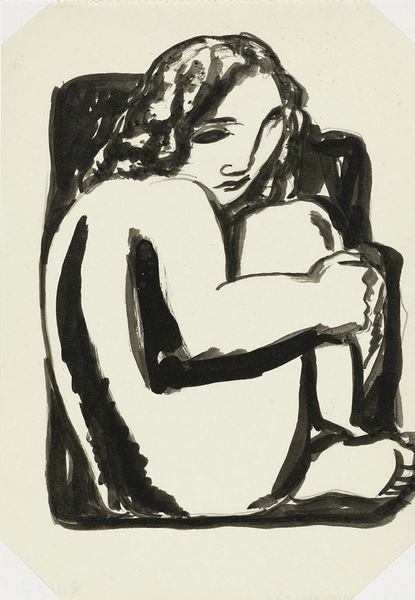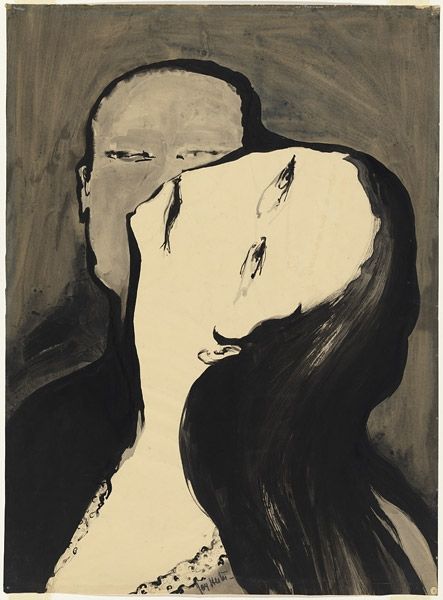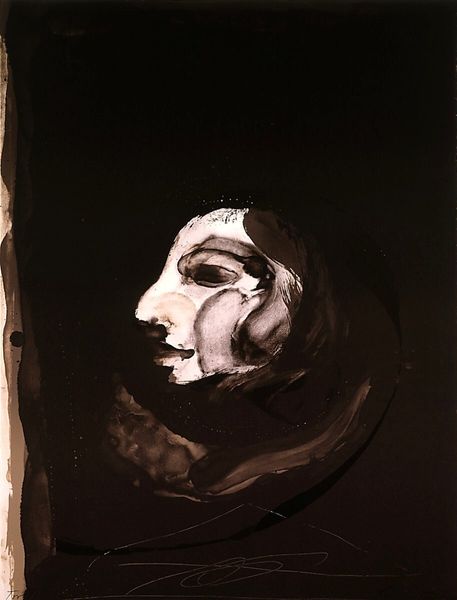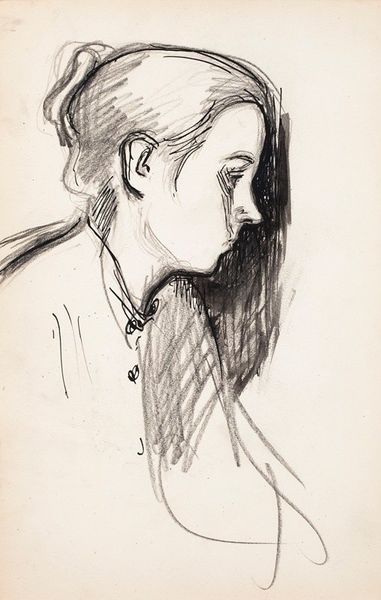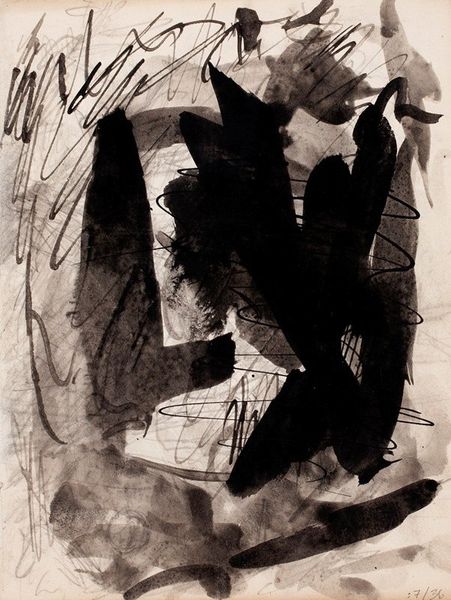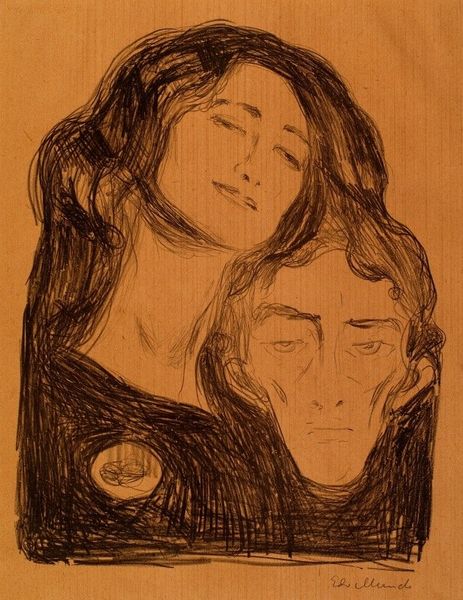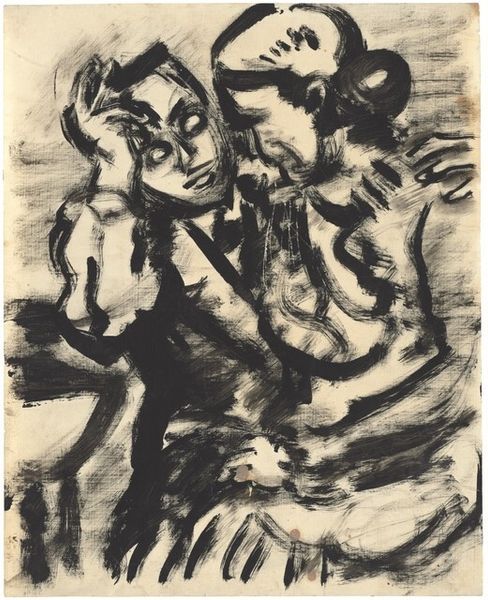
Copyright: Carlos Alonso,Fair Use
Curator: Carlos Alonso's 1969 piece, "Othello y Desdemona", rendered with ink and charcoal. What strikes you upon first viewing? Editor: The stark contrast immediately conveys a sense of tragedy. The bold strokes, the almost violent application of ink…it's far from romantic. The light in Desdemona's face is quite delicate, though, even amidst all the heavy shadows. Curator: Considering the socio-political context of Argentina in the late 60s, during a period of intense political upheaval and state-sponsored violence, Alonso often employed literary references as veiled critiques. Shakespeare’s "Othello" provides a framework to explore themes of jealousy, betrayal, and ultimately, injustice. The piece was created around the same time the artist endured his own tragic loss after the assassination of his wife’s attorney, who had been defending political prisoners. This traumatic event undeniably influenced his output from the time forward. Editor: Indeed. You see how the line becomes so expressive. The asymmetry of their features, rendered with this crude, visceral approach, seems less concerned with mere representation and more focused on expressing interior emotional states. We are dealing with the human figure here, however it quickly becomes clear through form, color, contrast and technique, that humanism as an idea is being directly questioned. The way in which it is executed mirrors an internal feeling of darkness and sorrow. Curator: Absolutely. Alonso weaponized classical narratives, like "Othello," to dissect contemporary Argentinian society. The violence inflicted upon Desdemona mirrors, on some level, the social wounds endured under dictatorial regimes. Art here functions as both a form of resistance and mourning. Editor: The visual economy is also interesting here: through reduction Alonso magnifies. Every stroke carries considerable emotional and thematic weight. Curator: His work really pushed the boundaries within an environment where freedom of expression was under constant attack. The choice to depict such a dark, intimate moment in art becomes an incredibly daring act of resistance and catharsis. Editor: Yes, and the composition makes sure you are right there, pressed up close. One leaves contemplating not just the narrative, but also the artist’s unflinching formal language in conveying immense sorrow and a damning social commentary.
Comments
No comments
Be the first to comment and join the conversation on the ultimate creative platform.
